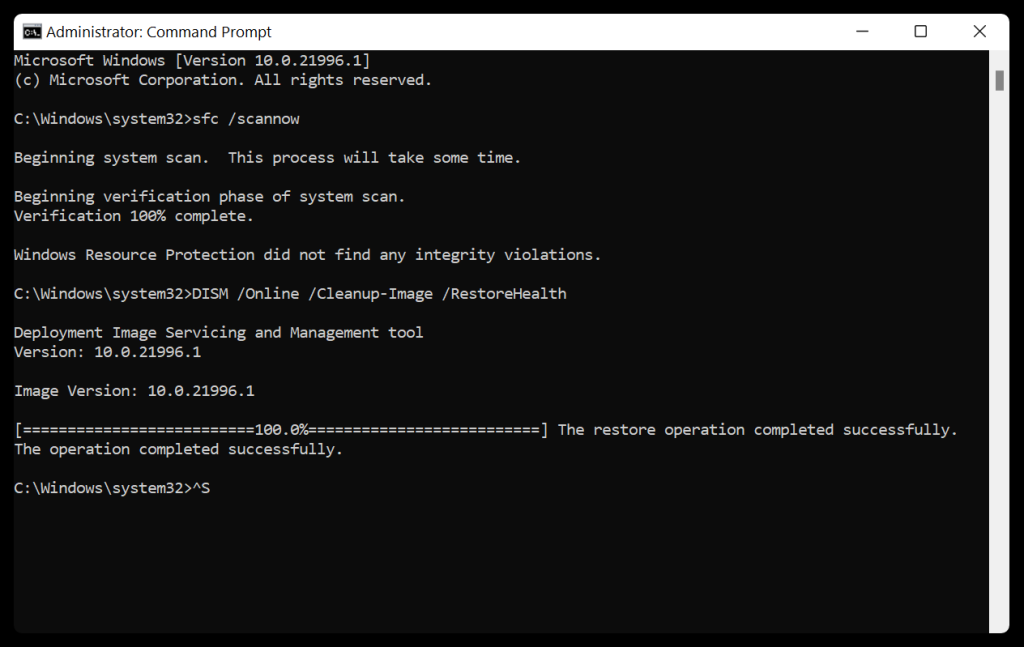Windows pushed its latest update KB5060842 on Patch Tuesday, quickly followed by another update KB5063060. The later was released to supplant the earlier patch and fix issues that were preventing the installation from completing, leading to the error 0x80070306.
Some users complained about facing compatibility issues while playing games that use the Easy Anti-Cheat (Fortnite’s anti-cheat engine) software, which was also the reason behind pushing this update.
In this blog, we will cover the error 0x80070306 in detail and share some practical methods to effectively troubleshoot this error on your Windows PC.
Error 0x80070306: What is It
When the Windows update returns error code 0x80070306, it means a cumulative patch couldn’t finish installing because something was wrong with the update process or the update files themselves. This failure is usually caused due to incomplete or corrupted update files, unstable network connection, or conflict from a third-party software.
When the error occurs, Windows may revert to the state it was in before the update began. In most cases, the issue is temporary and Windows may automatically try to resume the update later, but in some cases you need to step in and troubleshoot it manually.
Error 0x80070306: What Causes It
There can be various reasons that lead to the error 0x80070306 on your Windows PC. Some of the common causes behind this error are:
- Your system does not have enough space to download the update.
- The update could not complete due to an unstable network.
- The downloaded update files could be incomplete or corrupted.
- Some programs, such as security-related apps or anti-cheat software (used by many games) could be conflicting with the update.
- The update may involve a driver that is incompatible with your PC.
Error 0x80070306: The Fixes
Below we will share some practical methods to effectively troubleshoot this error on your computer. Give them a try and see which one works in your specific case.
Fix 1: Run the Windows Update Troubleshooter
If the 0x80070306 error keeps popping up while trying to perform a Windows update, you can use the Windows Update Troubleshooter to effectively fix it. Follow the steps below to run the troubleshooter on your PC:
Step 1: Press Win + S to launch search.
Step 2: Open Settings > Update & Security > Troubleshoot.
Step 3: Go to Additional Troubleshooters and click Windows Update.
Step 4: Click Run the troubleshooter.
Wait for the process to complete and see if the issue is resolved.
Fix 2: Repair System Files
The System File Checker (SFC) and Deployment Imaging Service and Management Tool (DISM) are powerful in-built utilities in Windows to repair system files and fix any underlying errors.
SFC scans system files, including DLL files, and replaces corrupt files with a cached copy located in a compressed folder at: %WinDir%\System32\dllcache
The DISM tool repairs Windows image, including the Windows Component Store and fixes issues that the SFC can’t resolve by itself.
Here’s how to perform these scans:
Step 1: Search for Command Prompt in the taskbar and select Run as administrator.
Step 2: Now, execute the following command for SFC scan: sfc /scannow
Step 3: Next, execute the following command for DISM scan: DISM /Online /Cleanup-Image /RestoreHealth

Finally, restart your computer and see if the issue is resolved.
Fix 3: Use a Different Windows Installation File
If you’re facing this error while installing the cumulative update for windows, it’s likely that there is something wrong with your installation media or the files maybe missing or corrupted. To fix this, try to re-download the correct Windows ISO and recreate the installation media. Follow this post to get detailed instructions – How to Create Windows Bootable USB?.
Bottom Line
The error 0x80070306 is usually associated with Windows update and may occur due to network issues, outdated drivers, system files, or issues with the update process itself. The methods outlined in this blog are an effective way to troubleshoot it: try running the Windows update troubleshooter and see if it resolves the issue.
If the error was caused due to corrupted system files, run the SFC and DISM scans to repair them. If the error still persists, it highly likely that your installation media might be corrupt and to fix this you need to use a different Windows installation file.